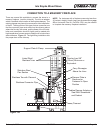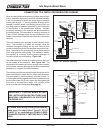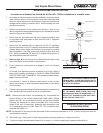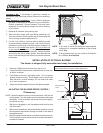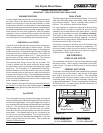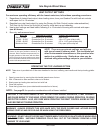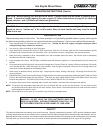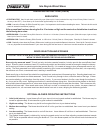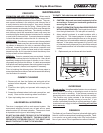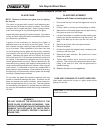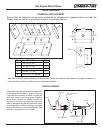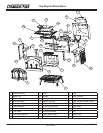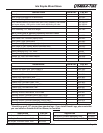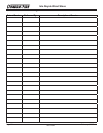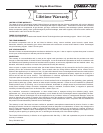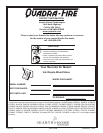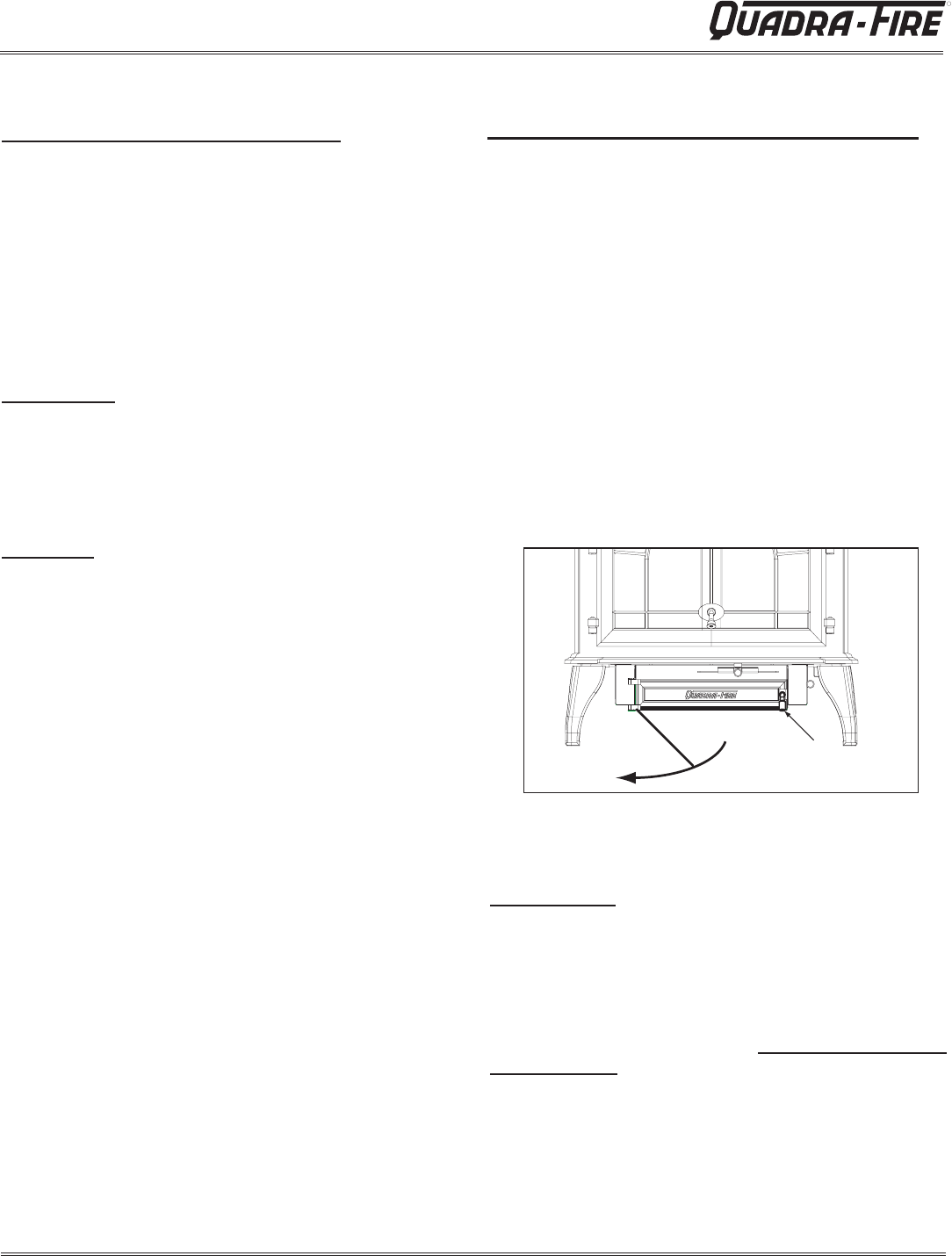
Page 21
Isle Royale Wood Stove
R
February 4, 2005
250-5763B
CHIMNEY CLEANING
1. Remove all ash from the firebox and extinguish all hot
embers before disposal. Allow the stove to cool com-
pletely.
2. Close the door tightly and proceed with sweeping the
chimney.
3. Sweep the collected ashes into the ash removal box, and
empty. Clean out the remaining ashes from firebox.
4. Open top-loading door and vacuum out.
FORMATION AND NEED FOR REMOVAL: When wood is
burned slowly it produces tar and other organic vapors which
combine with expelled moisture to form creosote. The creo-
sote vapors condense in the relatively cool chimney flue of
a newly-started or a slow-burning fire. As a result, creosote
residue accumulates on the flue lining. When ignited, this
creosote creates an extremely hot fire which may damage the
chimney or even destroy the house. The chimney connector
and chimney should be inspected at least once every two
months during the heating season to determine if a creosote
or soot build-up has occurred. If creosote has accumulated,
it should be removed to reduce the risk of a chimney fire.
INSPECTION: The chimney connector and chimney should
be inspected at least once every two months during the heat-
ing season to determine if a soot or creosote buildup have
occurred. Inspect the system at the stove connection and
at the chimney top. Cooler surfaces tend to build creosote
deposits quicker, so it is important to check the chimney from
the top as well as from the bottom.
REMOVAL: If soot or creosote have accumulated, it should
be removed to reduce the risk of a chimney fire. Use a brush
specifically designed for the type of chimney in use. A chim
-
ney sweep can perform this service. It is also recommended
that before each heating season the entire system be profes-
sionally inspected, cleaned, and repaired if necessary.
Prior to brushing the chimney clean, follow these steps to
ensure that the accumulation of ash and creosote falls directly
into the firebox for removal.
MAINTENANCE
ASH REMOVAL & DISPOSAL
The stove is equipped with an ash removal system. We
recommend emptying the ash pan at least once a week
when the stove is in constant operation. The amount of ash
is dependent on the type of wood being burned.
DO NOT ALLOW ASHES TO BUILD UP IN THE ASHPAN
UNTIL THEY REACH THE GRATE. THIS WILL LEAD TO
PREMATURE DETERIORATION OF THE GRATE AND
MAKE IT DIFFICULT TO EMPTY THE ASH PAN.
CREOSOTE
Ash Door
Handle
Swings Open
TO EMPTY THE ASH PAN AND DISPOSE OF ASHES:
1. Allow the stove to cool completely.
2. CAUTION ! Ash coals can remain extremely hot for
several days. Protect your hands with gloves when
removing the ash pan.
3. DO NOT OPERATE WITH ASH PAN DOOR OPEN OR
WITH ASH PAN REMOVED. The hinged door will open
from the right hand side. Pull ash pan out carefully.
4. Ashes should be placed in a metal container with a
tight fitting lid. The closed container of ashes should
be placed on a noncombustible floor or on the ground,
well away from all combustible materials, pending final
disposal. If the ashes are disposed of by burial in soil
or otherwise locally dispersed, they should be retained
in the closed container until all cinders have thoroughly
cooled.
5. Replace ash pan and close ash door handle.
OVERFIRING
Do not overfire. Using flammable liquids or too much wood,
burning trash in the stove, or allowing too much air into the
stove may result in overfiring. If the chimney connector or
stove glows red or even worse, white, the stove is overfired.
This condition may ignite creosote in the chimney, which
can be dangerous, possibly causing a house fire. If you
overfire, immediately close the air controls and door, if open,
to reduce the air supply to the fire. Overfiring will void the
stove warranty.
FIREBRICK
The firebox of your Quadra-Fire stove is lined with high quality
firebrick, which has exceptional insulating properties. There
is no need to use a grate; simply build a fire on the firebox
floor of your stove. Do not operate stove without firebrick.



